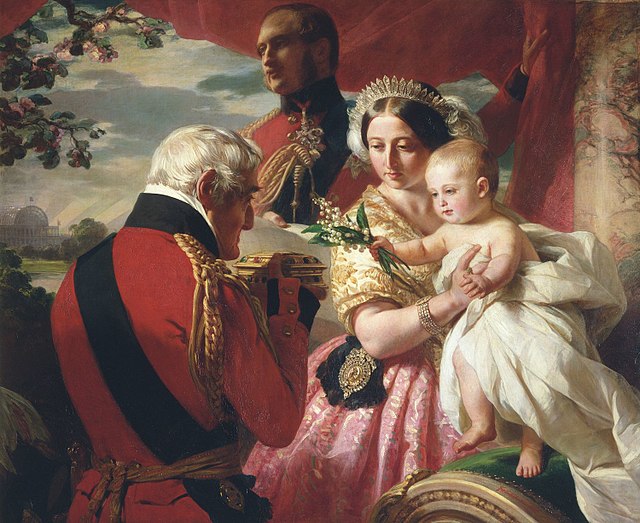Frederic Leighton, 1st Baron Leighton,, known as Sir Frederic Leighton between 1878 and 1896, was a British Victorian painter, draughtsman, and sculptor. His works depicted historical, biblical, and classical subject matter in an academic style. His paintings were enormously popular and expensive, during his lifetime, but fell out of critical favour for many decades in the early 20th century.
Frederic Leighton, Self-portrait, 1880
Flaming June (1895; Museo de Arte de Ponce)
After Vespers (1871; Princeton University Art Museum)
Cimabue's Celebrated Madonna Is Carried in Procession Through the Streets of Florence, 1853–1855
Victorian painting refers to the distinctive styles of painting in the United Kingdom during the reign of Queen Victoria (1837–1901). Victoria's early reign was characterised by rapid industrial development and social and political change, which made the United Kingdom one of the most powerful and advanced nations in the world. Painting in the early years of her reign was dominated by the Royal Academy of Arts and by the theories of its first president, Joshua Reynolds. Reynolds and the academy were strongly influenced by the Italian Renaissance painter Raphael, and believed that it was the role of an artist to make the subject of their work appear as noble and idealised as possible. This had proved a successful approach for artists in the pre-industrial period, where the main subjects of artistic commissions were portraits of the nobility and military and historical scenes. By the time of Victoria's accession to the throne, this approach was coming to be seen as stale and outdated. The rise of the wealthy middle class had changed the art market, and a generation who had grown up in an industrial age believed in the importance of accuracy and attention to detail, and that the role of art was to reflect the world, not to idealise it.

A Private View at the Royal Academy (1883) by William Powell Frith
The First of May, 1851 by Franz Xaver Winterhalter was intended to symbolise the age. Winterhalter painted in the manner promoted by Joshua Reynolds and based on the style of Raphael, in which the artist consciously idealises the subject of the work. The painting shows the 82nd birthday of Arthur Wellesley, 1st Duke of Wellington (born 1 May 1769), whose military victories were felt to have secured the stability and prosperity of the United Kingdom, and who as Prime Minister had attended the
Charles Dickens by Daniel Maclise (1839). Dickens's focus on reflecting the reality of modern life was highly influential on British artists.
The Fighting Temeraire








